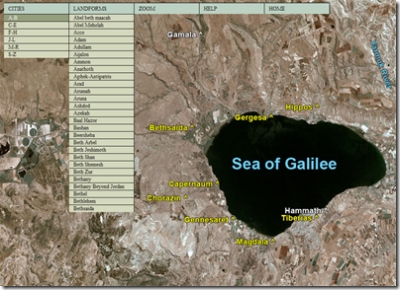I’ve just received and posted an approved English translation of Amnon Ben-Tor’s letter to the editor.
See the “Response to Rafi Greenberg” below.
I’ve just received and posted an approved English translation of Amnon Ben-Tor’s letter to the editor.
See the “Response to Rafi Greenberg” below.
From Arutz-7
The world’s largest electronic collection of Torah literature is now available online – in Hebrew. The Bar Ilan University Responsa Project, launched in 1991 in its CD format, was recently uploaded to the Internet on a platform provided by C.D.I. Systems. (See http://www.responsa.co.il) The virtual library encompasses all major Rabbinic sources representing more than 3,000 years of Hebrew and Aramaic literature. The website includes the Hebrew Bible and its principal commentaries, both the Babylonian and the Jerusalem Talmud with commentaries, Midrashim, the Kabbala’s main book – the Zohar, Maimonides’ Mishneh Torah, Rabbi Yosef Karo’s compilation of Jewish Law – the Shulchan Arukh with commentaries, and the collection of over 80,000 Responsa questions and answers on matters of Jewish law. The internet version of the Responsa Project includes a variety of tools and capabilities in its various features of search, navigation of texts, and hypertext links between books in different databases. Parts of the site are free, while full access requires a paid subscription.
There’s a new interactive satellite map available for download. B. G. Galbraith created this using a high-resolution satellite photo of Israel and then identifying major biblical sites. Each site is hyper-linked to a page with photos, descriptions, and relevant Scriptures about it. The program is free and may be downloaded here. This is another great tool to learn about the land and the Bible. 
I commented previously on a horribly one-sided Haaretz article (or here) on Israeli archaeology in the West Bank. Professor Amnon Ben-Tor, an esteemed archaeologist at Hebrew University, has written a letter in response. This was published in the Haaretz Hebrew edition, but there are no plans to publish it in the English edition. The letter is posted here, but letters to the editor are not archived and will be removed soon. Thanks to Joseph Lauer for passing this on.
Ha’aretz [Hebrew]
December 29, 2006
*******************************
BiblePlaces readers may be interested in signing up for the Contextual Reflections newsletter published regularly by Preserving Bible Times (producer of the Above Israel DVD set). These Reflections are rooted in a strong knowledge of biblical geography and history and are thought-provoking as well. I cited the December issue in the discussion of “No Room in the Inn” and have frequently found the insights to be beneficial and challenging.
The signup sheet is rather intimidating, but you can check what you want. The signup sheet may lead you to believe that you’re in for frequent mailings and sales pitches, but I have found neither to be true. As a subscriber, I get good, helpful content about biblical matters. I recommend it.
Here’s a remarkable home-made video of a flash flood in the Negev of Israel. The cameraman and his companions don’t strike me as very smart, and the footage is shaky, but you’ll get the idea.
“Restore our fortunes, O Lord, like streams in the Negev” (Ps 126:4).
The BiblePlaces Blog provides updates and analysis of the latest in biblical archaeology, history, and geography. Unless otherwise noted, the posts are written by Todd Bolen, PhD, Professor of Biblical Studies at The Master’s University.
As an Amazon Associate we earn from qualifying purchases. In any case, we will provide honest advice.